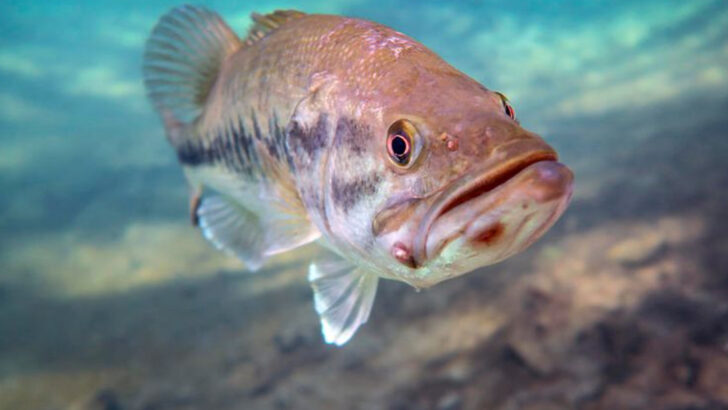Largemouth bass aren’t just fish — they’re freshwater legends.
They’ve broken lines, won tournaments, and turned quiet lakes into battlegrounds. Ask any angler, and they’ll tell you: the moment a bass hits the lure, it’s game on. But beyond the splash and struggle lies a fish packed with secrets.
From bizarre feeding habits to freaky survival tricks, largemouth bass are way more complex than their tough-guy image suggests. They’re crafty, clever, and occasionally just plain weird — in the best possible way.
Whether you’re a weekend warrior or a seasoned tournament pro, these 14 facts might just change the way you see your favorite rival. Because there’s always more lurking beneath the surface.
Bass Communication

Largemouth bass have a unique way of interacting with each other. They communicate through subtle body movements and vibrations in the water. This non-verbal interaction is essential for establishing territory and during mating rituals.
Understanding this form of communication helps anglers predict their behavior. Observing them closely, you might notice the slight twitch of a fin or a change in swimming patterns—signals often missed by casual observers.
Their ability to ‘talk’ without words adds an intriguing layer to their already mysterious nature, making every fishing trip a potential learning experience.
Temperature Sensitivity
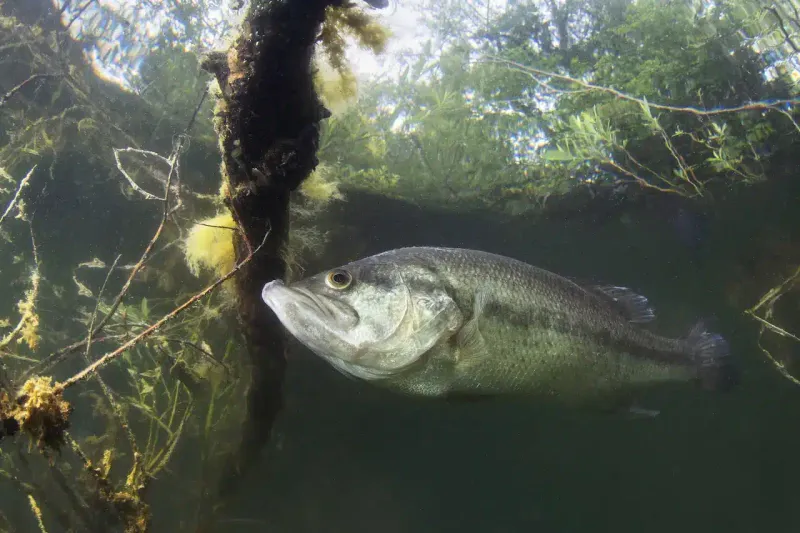
Did you know largemouth bass are highly sensitive to temperature changes? They prefer warm waters and will often relocate to find their ideal climate. Water temperature affects their metabolism, feeding habits, and spawning cycles.
During colder months, they tend to slow down, seeking deeper waters where the temperature remains constant. This adaptation helps them survive in diverse environments.
Anglers should consider water temperature when planning their fishing trips, as it can determine the bass’s activity level. Their temperature-driven behavior challenges even seasoned anglers to think strategically.
Acrobatic Jumpers
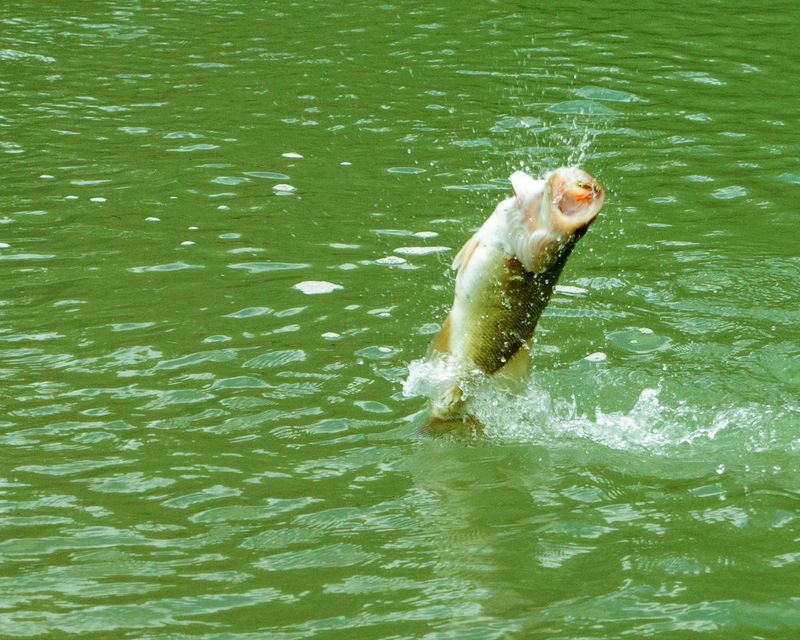
Largemouth bass are renowned for their acrobatic leaps. Their powerful jumps are not only a defense mechanism but also a thrilling spectacle for anglers. When hooked, they often leap out of the water, shaking their heads to free themselves.
This dramatic display enhances the excitement of bass fishing. Anglers cherish these moments, as the airborne battle requires skill and patience to win.
The bass’s ability to leap showcases their strength and agility, making them a challenging and rewarding catch. Each jump tells a story of survival and instinct.
Diet Versatility

The diet of a largemouth bass is as varied as its habitat. These opportunistic feeders consume everything from small fish and insects to crustaceans and amphibians. Their adaptability in diet allows them to thrive in various environments.
Understanding their eating habits provides insights into their behavior and habitat preferences. Anglers often mimic their prey to lure them effectively.
A bass’s versatile diet reflects its resourcefulness and adaptability, showcasing its role as a top predator in the aquatic food chain. This trait ensures its survival in fluctuating conditions.
Longevity and Growth

Largemouth bass can live up to 15 years in the wild, with some even reaching 20 years. Their growth depends on various factors, including environment and diet. Examining their scales can reveal their age and growth patterns.
A well-fed bass in a nutrient-rich habitat grows faster and larger than one in a less favorable environment. This growth potential fascinates anglers, as catching a trophy-sized bass is a memorable achievement.
Their longevity and growth provide a glimpse into their life history and the ecosystems they inhabit, adding depth to their allure.
Color Variations
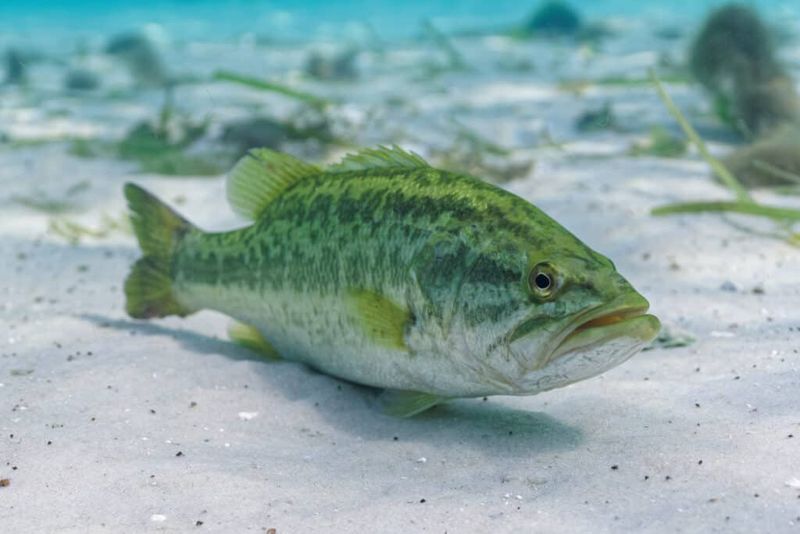
Largemouth bass exhibit fascinating color variations depending on their habitat. Their coloration serves as natural camouflage, adapting to their surroundings to avoid predators and ambush prey. Bass in clear water may appear lighter, while those in murky environments are darker.
These color shifts are not just cosmetic but play a crucial role in their survival. Anglers often use this knowledge to select the right bait colors that mimic natural prey.
Observing a bass’s color provides insights into its environment and behavior, enhancing the angling experience with an added layer of strategy.
Behavioral Intelligence

Largemouth bass are known for their behavioral intelligence. They learn from past encounters, recognizing lures and avoiding them if they sense danger. This ability to learn and adapt makes them a formidable challenge for anglers.
Their cognitive skills extend to social interactions within their schools, where they exhibit complex behaviors.
Anglers who study their habits often find new strategies to outsmart these clever fish. The bass’s intelligence adds an exciting element to fishing, turning it into a mental game of wits.
Unique Spawning Habits

The spawning habits of largemouth bass are unique and fascinating. Males create nests in shallow waters, where they guard the eggs until hatching. This parental care is critical for the survival of the offspring.
During spawning season, bass become protective and aggressive, influencing their behavior and making them more challenging to catch.
Understanding their reproductive cycle allows anglers to fish responsibly, ensuring the sustainability of bass populations. These spawning rituals highlight the complex life cycle of largemouth bass, emphasizing their role in aquatic ecosystems.
Habitat Preferences
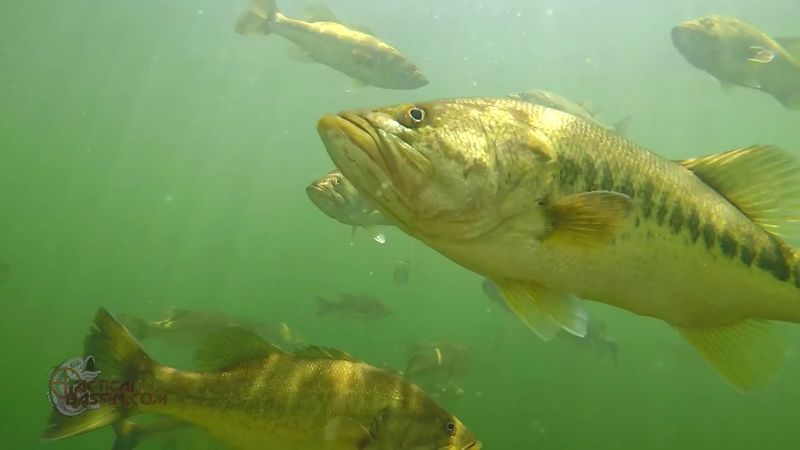
Largemouth bass thrive in diverse habitats, from lakes and rivers to ponds and swamps. They prefer areas with abundant vegetation and submerged structures, which offer shelter and hunting grounds.
Their habitat preferences are influenced by the availability of food and environmental conditions. Knowing where they dwell helps anglers locate and catch them more effectively.
The diverse habitats of bass showcase their adaptability and resilience, making them a symbol of nature’s ingenuity. Observing them in their natural setting enhances our appreciation of their ecological importance.
Nighttime Activity
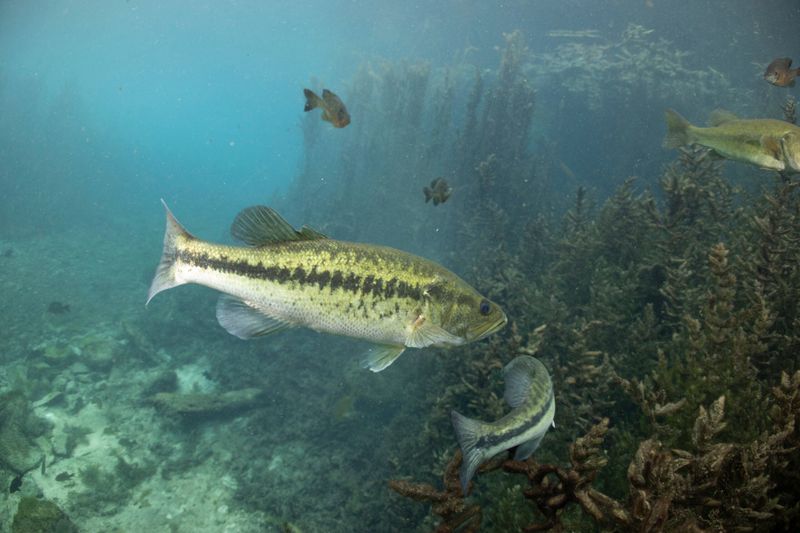
Largemouth bass are surprisingly active at night. Under the cover of darkness, they hunt for prey, taking advantage of their keen senses. Night fishing for bass presents a unique challenge for anglers, requiring different techniques and equipment.
Their nocturnal behavior is driven by the need to exploit opportunities when competition is low. This adaptability demonstrates their intelligence and survival skills.
Understanding their nighttime habits opens new possibilities for fishing enthusiasts, offering a different perspective on the bass’s daily life. It’s a reminder of the ever-present mysteries beneath the water’s surface.
Impact of Moon Phases

Moon phases have a surprising impact on largemouth bass behavior. During a full moon, bass become more active, increasing their feeding and movement.
Anglers have long observed these patterns, adjusting their strategies accordingly. The connection between lunar cycles and bass activity highlights the intricate links between nature and animal behavior.
This phenomenon provides a deeper understanding of bass ecology, revealing the unseen forces that govern their lives. Fishing during specific moon phases can enhance success rates, adding a mystical element to the sport.
Social Structures

Largemouth bass exhibit fascinating social structures. They often form loose groups, especially in environments rich in resources. These social interactions can influence their feeding patterns and territorial behaviors.
Observing their group dynamics offers insights into their complex personalities and survival strategies.
Anglers intrigued by fish behavior find these social structures captivating, as they reveal the nuanced relationships within bass communities. It’s a reminder of the social nature of many fish species, challenging our perceptions of underwater life.
Record-Breaking Catches
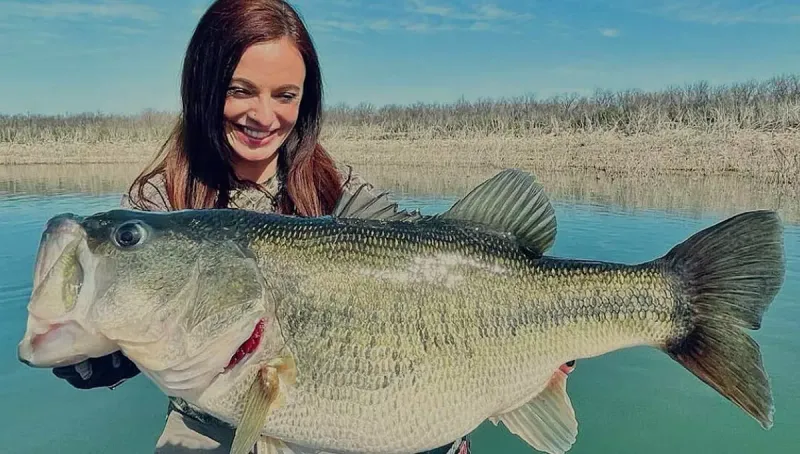
Largemouth bass have captivated anglers worldwide, leading to record-breaking catches that make headlines. The largest recorded bass was caught in Georgia, weighing over 22 pounds.
These monumental catches inspire anglers to pursue their own records, driving innovations in fishing techniques and equipment.
The stories behind these catches often reflect the dedication and skill of the anglers involved, celebrating the timeless bond between humans and nature. Each record-breaking bass serves as a testament to the thrill of the hunt and the enduring allure of the great outdoors.
Influence on Popular Culture
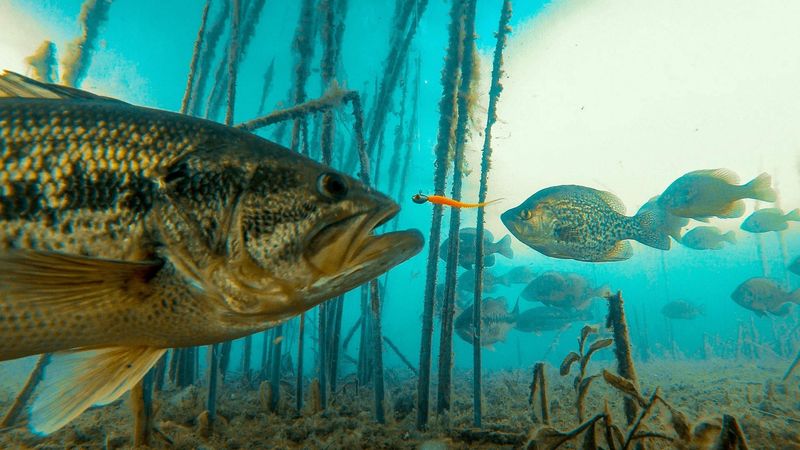
The largemouth bass holds a special place in popular culture. Featured in magazines, TV shows, and even video games, they symbolize the thrill of sport fishing. Their prominence has led to the creation of tournaments, drawing anglers from around the world.
This cultural influence has elevated the bass to iconic status, inspiring art, literature, and even culinary pursuits.
Their role in popular culture highlights the deep connection between humans and the natural world, reflecting our fascination with these remarkable fish. It’s a celebration of the shared passion for angling and the pursuit of adventure.

